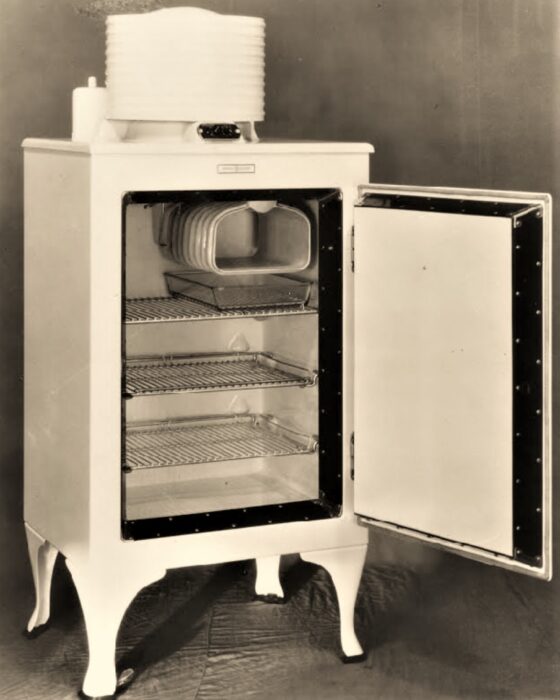Apr 04 2025
Is Planned Obsolescence Real
 Yes – it is well-documented that in many industries the design of products incorporates a plan for when the product will need to be replaced. A blatant example was in 1924 when an international meeting of lightbulb manufacturers decided to limit the lifespan of lightbulbs to 1,000 hours, so that consumers would have to constantly replace them. This artificial limitation did not end until CFLs and then LED lightbulbs largely replaced incandescent bulbs.
Yes – it is well-documented that in many industries the design of products incorporates a plan for when the product will need to be replaced. A blatant example was in 1924 when an international meeting of lightbulb manufacturers decided to limit the lifespan of lightbulbs to 1,000 hours, so that consumers would have to constantly replace them. This artificial limitation did not end until CFLs and then LED lightbulbs largely replaced incandescent bulbs.
But – it’s more complicated than you might think (it always is). Planned obsolescence is not always about gimping products so they break faster. It often is – products are made so they are difficult to repair or upgrade and arbitrary fashions change specifically to create demand for new versions. But often there is a rational decision to limit product quality. Some products, like kids’ clothes, have a short use timeline, so consumers prefer cheap to durable. There is also a very good (for the consumer) example of true obsolescence – sometimes the technology simply advances, offering better products. Durability is not the only nor the primary attribute determining the quality of a product, and it makes no sense to build in expensive durability for a product that consumers will want to replace. So there is a complex dynamic among various product features, with durability being only one feature.
We can also ask the question, for any product or class of products, is durability actually decreasing over time? Consumers are now on the alert for planned obsolescence, and this may produce the confirmation bias of seeing it everywhere, even when it’s not true. A recent study looking at big-ticket appliances shows how complex this question can be. This is a Norwegian study looking at the lifespan of large appliances over decades, starting in the 1950s.
First, they found that for most large appliances, there was no decrease in lifespan over this time period. So the phenomenon simply did not exist for the items that homeowning consumers care the most about, their expensive appliances. There were two exceptions, however – ovens and washing machines. Each has its own explanations.
For washing machines, the researchers found another plausible explanation for the decrease in lifespan from 19.2 to 10. 6 years (a decrease of 45%). The researchers found that over the same time, the average number of loads a household of four did increased from 2 per week in 1960 to 8 per week by 2000. So if you count lifespan not in years but in number of loads, washing machines had become more durable over this time. I suspect that washing habits were formed in the years when many people did not have washing machines, and doing laundry was brutal work. Once the convenience of doing laundry in the modern era settled in (and perhaps also once it became more than women’s work), people did laundry more often. How many times do you wear an article of clothing before you wash it? Lots of variables there, but at some point it’s a judgement call, and this likely also changed culturally over time.
For ovens there appears to be a few answers. One is that ovens have become more complex over the decades. For many technologies there is a trade-off between simple but durable, and complex but fragile. Again – there is a tradeoff, not a simple decision to gimp a product to exploit consumers. But there are two other factors the researchers found. Over this time the design of homes have also changed. Kitchens are increasingly connected to living spaces with a more open design. In the past kitchens were closed off and hidden away. Now they are where people live and entertain. This means that the fashion of kitchen appliances are more important. People might buy new appliances to make their kitchen look more modern, rather than because the old ones are broken.
If this were true, however, then we would expect the lifespan of all large kitchen appliances to converge. As people renovate their kitchens, they are likely to buy all new appliances that match and have an updated look. This is exactly what the researchers found – the lifespan of large kitchen appliances have tended to converge over the years.
They did not find evidence that the manufacturers of large appliances were deliberately reducing the durability of their products to force consumers to replace them at regular intervals. But this is the narrative that most people have.
There is also a bigger issue of waste and the environment. Even when the tradeoffs for the consumer favor cheaper, more stylish and fashionable, or more complex products with lower durability, is this a good thing for the world? Landfills are overflowing with discarded consumer products. This is a valid point, and should be considered in the calculus when making purchasing decisions and also for regulation. Designing products to be recyclable, repairable, and replaceable is also an important consideration. I generally replace my smartphone when the battery life gets too short, because the battery is not replaceable. (This is another discussion unto itself.)
But replacing old technology with new is not always bad for the environment. Newer dishwashers, for example, are much more energy and water efficient than older ones. Refrigerators are notorious energy hogs, and newer models are substantially more energy efficient than older models. This is another rabbit hole – exactly when do you replace rather than repair an old appliance? – but generally if a newer model is significantly more efficient, replacing may be best for the environment. Refrigerators, for example, probably should be upgraded every 10 years with newer and more efficient models – so then why build them to last 20 or more?
I like this new research and this story primarily because it’s a good reminder that everything is more complex than you think, and not to fall for simplistic narratives.






